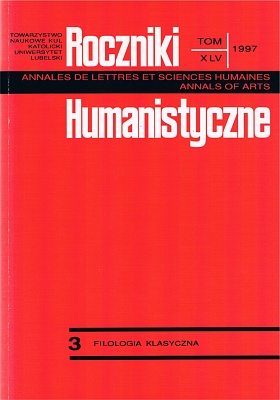The Category of Voice in the Late Antique Scholias to Dionysius of Thrace's Τέχνη γραμματική
Abstract
The traditional division of the voice of verb into activum, medium and passivum, as created by the ancient grammarians, above all by Dionysius the Thracean, already in the ancient times aroused many doubts and comments. The author of the commentary to the Thracean grammar preserved in Scholia Vaticana has broadened his classification of diatheses. To the basic three, i.e. to the diathesis of action, experience and mediate, he added the neutral and common ones. Other grammarians, especially Latin, supplemented this classification by additional genera verborum. They listed as many as nine of them. This multiplication of diatheses and terminological confusion were born due to imprecise criteria, according to which the above divisions were made. To oscillate between, on the one hand, the morphological criterium and, on the other, the semantic one, as well as attempts to agree the two criteria bore fruit by the introduction of successive divisions.
As a result, the semantic criterium became dominant among the Greek grammarians. On the basis of this criterium they selected only two diatheses at the higher level: ἐνέργεια and πάϑος. In detailed analyses the number of diatheses was enlarged. The ancient grammarians did not unanimously speak for one of the criteria of division, neither they worked out completely a uniform terminology. The names genus and significatio introduced by Romans also failed to decide the terminological problems connected with the category of voice.
Copyright (c) 1997 Roczniki Humanistyczne

This work is licensed under a Creative Commons Attribution-NonCommercial-NoDerivatives 4.0 International License.





